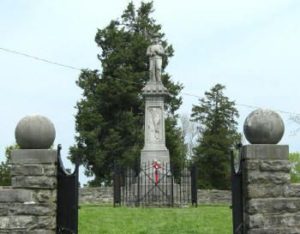 When I was a child, my family’s summer vacation consisted of driving hundreds of miles from wherever we lived to Little Rock, Arkansas to spend a week in my grandparents’ little bitty house. It had an attic fan but no air-conditioning. If you think there’s anywhere in the USA hotter than Little Rock in the summertime, you’re wrong. If you don’t believe me, just go there some July or August.
When I was a child, my family’s summer vacation consisted of driving hundreds of miles from wherever we lived to Little Rock, Arkansas to spend a week in my grandparents’ little bitty house. It had an attic fan but no air-conditioning. If you think there’s anywhere in the USA hotter than Little Rock in the summertime, you’re wrong. If you don’t believe me, just go there some July or August.
Despite the heat, I always had a good time on those trips. Kinfolk would come see us to talk and laugh and eat watermelon under the big mimosa tree in the backyard. Sometimes we’d go fishing or to the zoo. And one thing we always did, without exception, was visit the cemetery.
My mother insisted on spending time at the graves of every one of her relatives buried there, which added up to a pretty big number. My brother and I were warned in no uncertain terms not to walk on any of the graves, which was easier in those old-timey cemeteries than in modern ones because the graves were mounded rather than flat. Most of them had a foot marker in addition to a headstone so it wasn’t hard to figure out which areas to avoid. It would have been disrespectful to do otherwise.
Those memories came flooding back when I toured the Perryville Battlefield in Kentucky a couple of weeks ago. Though I’ve had kids living in nearby Danville for almost 20 years, I’d never visited the battle site. In fact, I knew almost nothing about the Civil War in Kentucky.
Now I’m not quite so ignorant.
Kentucky was a slave state that never seceded from the Union. Like Maryland and Missouri, it was considered a “border state.” Kentucky sent 125,000 soldiers to the Union army and 35,000 to the Confederate. Both Abraham Lincoln and Jefferson Davis were born in Kentucky. It was a “brother against brother” state in every sense of the term.
On October 8, 1862, Union General Don Carlos Buell’s 20,000 troops engaged Confederate General Braxton Bragg’s 16,000 troops at Perryville in what was to be the largest Civil War battle in the Bluegrass State. When it was over, more than a thousand soldiers lay dead. The bodies of Union soldiers were identified and quickly buried by regiment. They were later moved to Camp Nelson National Cemetery in nearby Jessamine County. But because of Bragg’s hasty retreat when the fighting ended, Confederate dead were left lying on the battlefield.
Buzzards and wild hogs showed up quickly. Henry Bottom, a farmer who owned most of the land upon which the battle was fought, hastily organized a civilian burial detail that included many of his neighbors, his slaves and students from the nearby school for the deaf. About 200 Confederate soldiers, most of their names unknown to this day, were buried in a mass grave.
The battlefield went largely unprotected for decades. Even today, it’s considered one of the most unaltered Civil War sites in the nation. The vistas I saw in late September were virtually the same as the soldiers saw on that fateful day in 1862. And the weather was every bit as hot and dry as it was on the day of the battle.
In 1952, the Perryville Lions Club stepped in to rehabilitate the Confederate cemetery. Two years later, the Perryville State Battlefield Site was officially opened. Visitors can peruse the museum, watch a video about the battle and take a self-guided walking tour of the battlefield. But if you want to get close to the monument to the Confederate dead that’s located in the middle of the burial ground, you have to walk on the massive grave of the men interred there.
I did. But I couldn’t help but think it wasn’t respectful.
(October 6, 2019)